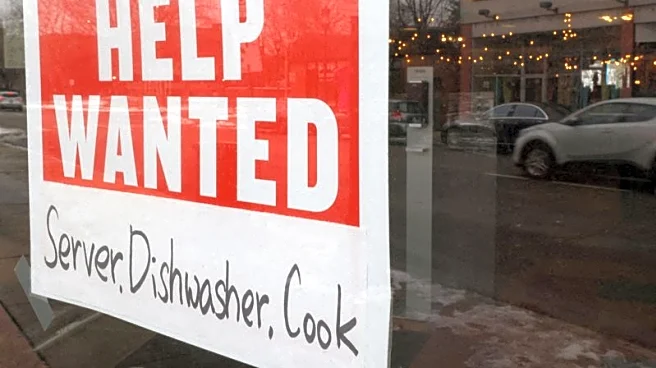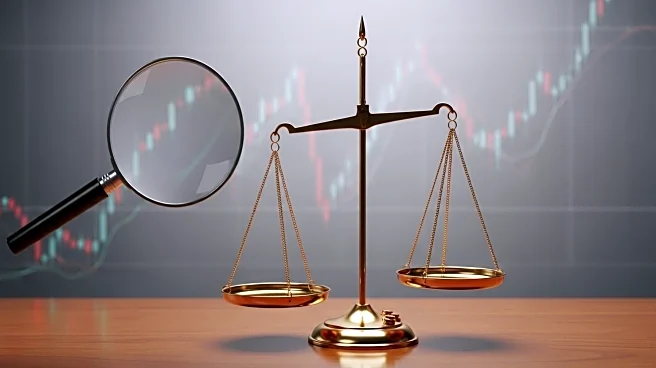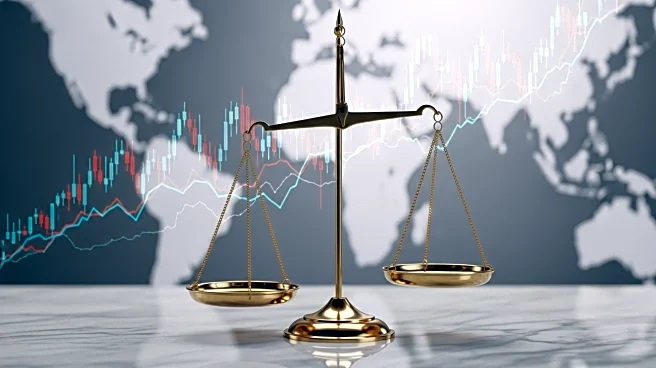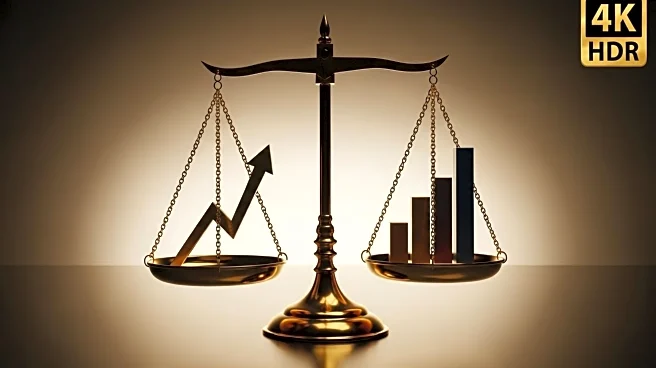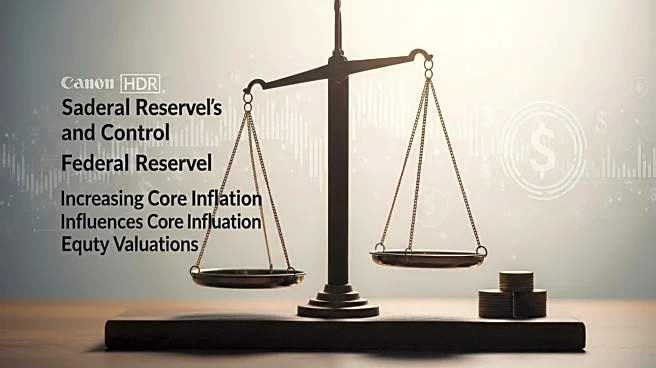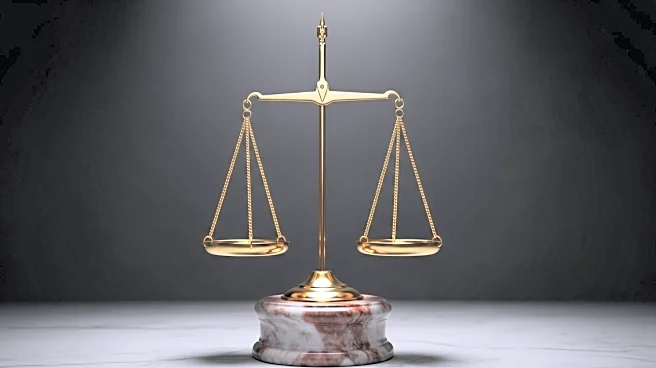What's Happening?
The Federal Reserve is contemplating a potential interest rate cut at its upcoming meeting on September 16-17, as conflicting signals emerge from the U.S. job market. Recent data indicates that job growth has slowed significantly over the past three months, averaging just 35,000 new jobs, which is one of the weakest patches since the financial crisis of 2007-2009. Despite this slowdown, the unemployment rate remains steady at 4.2%, and wage growth continues at approximately 4% annually, which is sufficient to keep pace with inflation. Fed officials are divided on whether the current job market conditions warrant a rate cut, with some expressing concerns about a potential decline in labor demand. Fed Governor Chris Waller has advocated for a rate cut, citing risks of further deterioration in the labor market. The decision is further complicated by pressure from President Trump for lower interest rates, as well as ongoing inflation concerns.
Why It's Important?
The potential interest rate cut by the Federal Reserve is significant as it could influence various aspects of the U.S. economy, including consumer spending, business investment, and inflation. A rate cut typically aims to stimulate economic activity by making borrowing cheaper, which can lead to increased spending and investment. However, the decision is fraught with challenges, as policymakers must balance the need to support the labor market against the risk of exacerbating inflation. The outcome of this decision could have broad implications for economic stakeholders, including businesses, consumers, and investors. If the Fed opts to cut rates, it may signal a shift towards a more accommodative monetary policy, potentially boosting market confidence but also raising concerns about long-term inflationary pressures.
What's Next?
The Federal Reserve will receive final inflation data for August on September 11, which will be crucial in shaping its decision at the September meeting. Policymakers will closely analyze this data alongside the latest job market reports to determine the most appropriate course of action. The debate within the Fed is expected to be intense, as officials weigh the risks of persistent inflation against the need to support the labor market. The decision could also prompt reactions from political leaders and economic analysts, who will be watching closely to see how the Fed navigates these complex economic dynamics.
Beyond the Headlines
The potential interest rate cut raises deeper questions about the Fed's approach to balancing economic growth with inflation control. The decision could reflect broader shifts in monetary policy strategy, as the Fed grapples with the challenges of a post-pandemic economy. Additionally, the influence of political pressure from the White House highlights the ongoing debate over the independence of the Federal Reserve and its role in shaping economic policy. These factors could have long-term implications for how monetary policy is conducted in the U.S., affecting both domestic and global economic landscapes.


